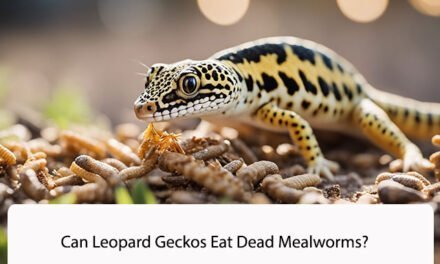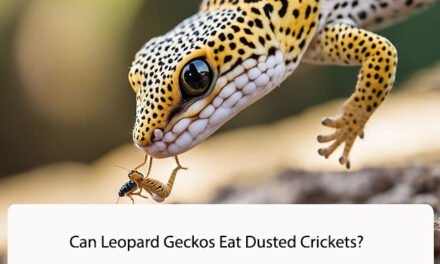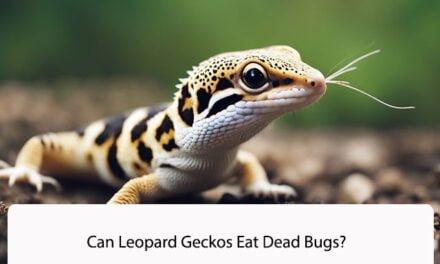Leopard geckos are popular pets among reptile enthusiasts due to their unique appearance and relatively low maintenance requirements. As with any pet, it’s important to ensure they receive a balanced and appropriate diet. One question that often arises is whether leopard geckos can eat rolly pollies, also known as pill bugs or woodlice.
Rolly pollies are small crustaceans that are commonly found in gardens and other outdoor environments. They are often used as a food source for other types of pets, such as certain species of birds and reptiles. However, when it comes to leopard geckos, the answer is not as straightforward.
While some leopard gecko owners have reported feeding rolly pollies to their pets without any issues, others warn against it. In this article, we’ll take a closer look at whether leopard geckos can eat rolly pollies, and what factors you should consider before adding them to your pet’s diet.
Dietary Habits of Leopard Geckos
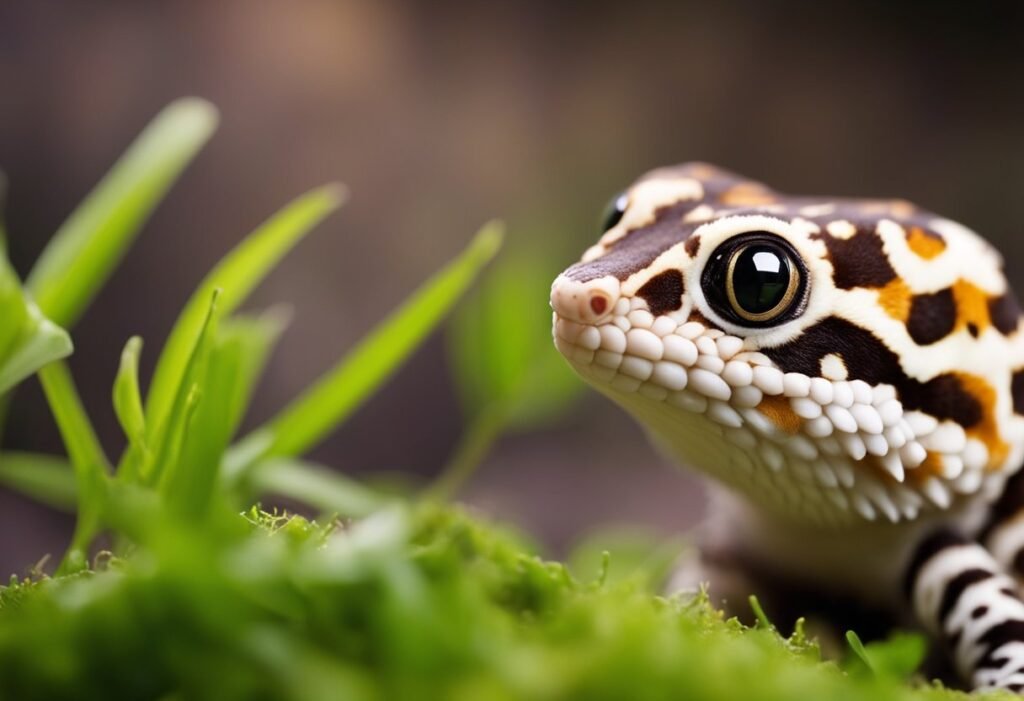
Leopard geckos are insectivores, which means they primarily eat insects. In the wild, they hunt for their food at night and eat a variety of insects such as crickets, mealworms, waxworms, and roaches. In captivity, they can be fed a diet of commercially available insects such as crickets, mealworms, and superworms.
It is important to note that leopard geckos should not be fed insects that are too large for them to eat. This can cause impaction, which is a blockage in their digestive system that can be fatal. It is also important to provide a calcium supplement to ensure proper bone growth and health.
While some leopard gecko owners may consider feeding their geckos rolly pollies, also known as pill bugs or woodlice, it is not recommended. Rolly pollies are not a natural part of a leopard gecko’s diet and may not provide the necessary nutrients for their health. Additionally, some species of rolly pollies secrete a defensive chemical that can be harmful to leopard geckos if ingested.
In summary, leopard geckos are insectivores and should be fed a diet of appropriately sized insects and provided with a calcium supplement. While rolly pollies may seem like a potential food source, they are not recommended as they may not provide the necessary nutrients and can be harmful to the gecko’s health.
Understanding Rolly Pollies

Rolly pollies, also known as pill bugs or sow bugs, are small crustaceans that are often found in damp and dark environments. They are commonly used as a food source for some reptiles, including leopard geckos. In this section, we will discuss the nutritional profile and potential risks associated with feeding rolly pollies to leopard geckos.
Nutritional Profile
Rolly pollies are a good source of protein, calcium, and fiber. They also contain small amounts of other essential vitamins and minerals. However, they are not a complete food source and should not be the primary diet of leopard geckos. Feeding rolly pollies as a supplement to a balanced diet can provide some additional nutritional benefits.
Potential Risks
While rolly pollies are generally safe for leopard geckos to eat, there are some potential risks to consider. One risk is the possibility of introducing harmful bacteria or parasites to the gecko’s digestive system. It is important to ensure that the rolly pollies are clean and free from any contaminants before feeding them to your gecko.
Another risk is the possibility of impaction, which occurs when the gecko ingests too much substrate or other indigestible material. Rolly pollies are known to roll up into a ball when threatened, and if ingested in this form, they can cause impaction. It is important to monitor your gecko’s feeding habits and ensure that they are not ingesting too much substrate or other non-food items.
Overall, rolly pollies can be a beneficial addition to a leopard gecko’s diet when fed in moderation and with proper precautions. However, it is important to consult with a veterinarian or reptile specialist before making any changes to your gecko’s diet.
Feeding Rolly Pollies to Leopard Geckos
Leopard geckos are known for their ability to eat a variety of insects, but can they eat rolly pollies? The answer is yes, but with some precautions.
Preparation and Safety
Before feeding rolly pollies to leopard geckos, it is important to properly prepare them. Rolly pollies should be collected from a clean environment and should not be exposed to any pesticides or chemicals. It is also important to remove any dead or decaying rolly pollies from the container.
Leopard geckos can choke on large or hard objects, so it is recommended to crush the rolly pollies or cut them into smaller pieces before feeding. This will also make it easier for the gecko to digest the food.
Frequency and Quantity
Rolly pollies should not be the main source of food for leopard geckos, but they can be given as an occasional treat. It is important to not overfeed rolly pollies to leopard geckos, as they are high in chitin which can be difficult to digest in large quantities.
We recommend feeding rolly pollies to leopard geckos once or twice a month, and only a few at a time. It is important to monitor the gecko’s behavior and digestion after feeding to ensure they are not experiencing any issues.
In conclusion, rolly pollies can be a safe and nutritious treat for leopard geckos when prepared and fed in moderation. As with any new food, it is important to introduce it slowly and monitor the gecko’s behavior and digestion.
Alternative Food Sources for Leopard Geckos
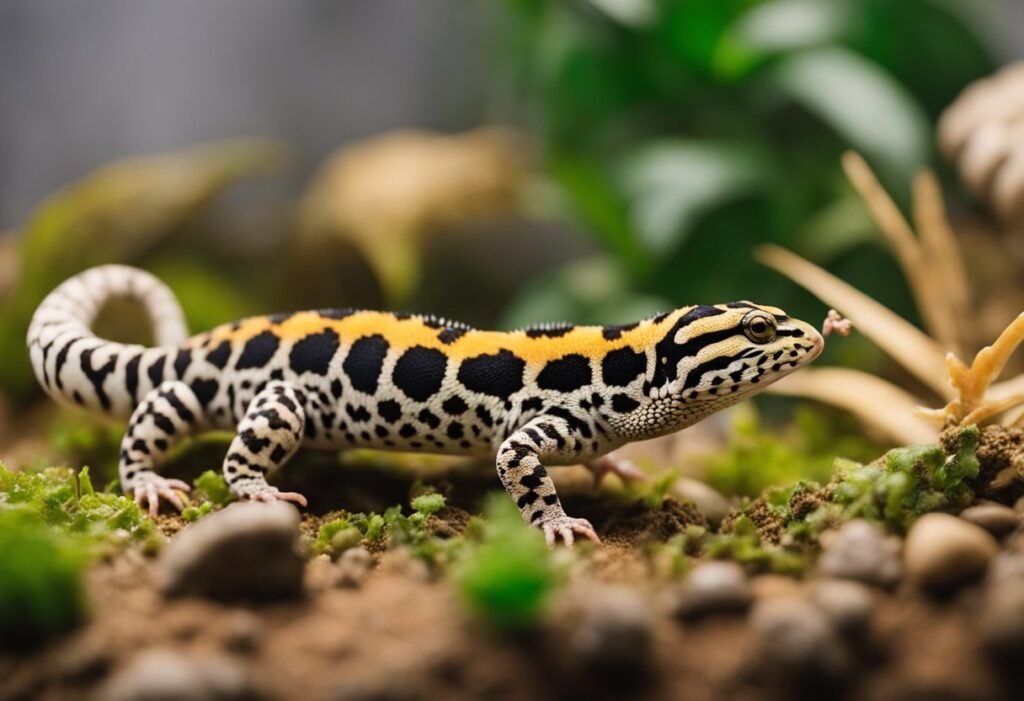
As responsible pet owners, we want to make sure that our leopard geckos are getting the proper nutrition they need to thrive. While we may be familiar with feeding them crickets and mealworms, there are other alternative food sources that can provide a variety of nutrients for our pets.
One of these alternative food sources is roly polly, also known as pillbugs or woodlice. These small crustaceans are a great source of calcium and protein for leopard geckos. However, it is important to note that not all species of roly polly are safe for consumption. Only the Armadillidium vulgare species should be fed to leopard geckos.
Another alternative food source for leopard geckos is dubia roaches. These roaches are high in protein and low in fat, making them a healthy option for our pets. They are also easy to digest and have a soft exoskeleton, making them a great food source for juvenile leopard geckos.
Lastly, we can also feed our leopard geckos waxworms as an occasional treat. Waxworms are high in fat and should not be fed as a staple food source, but they can be a great source of variety and enrichment for our pets.
Overall, it is important to provide a balanced diet for our leopard geckos and to offer a variety of food sources to ensure they are getting all the nutrients they need. By incorporating alternative food sources such as roly polly, dubia roaches, and waxworms, we can provide a diverse and nutritious diet for our beloved pets.
Health and Digestion in Leopard Geckos
As responsible pet owners, it’s important to ensure that our leopard geckos are healthy and well-fed. Proper nutrition is key to maintaining their health and wellbeing. In this section, we’ll discuss the importance of a healthy diet and proper digestion in leopard geckos.
Leopard geckos are insectivores and require a diet rich in protein. They primarily eat crickets, mealworms, and other insects. However, some owners may wonder if they can supplement their gecko’s diet with rolly pollies, also known as pill bugs or woodlice.
While rolly pollies are not toxic to leopard geckos, they are not a recommended food source. Rolly pollies are low in protein and high in chitin, which can be difficult for leopard geckos to digest. Ingesting too much chitin can lead to impaction, a serious condition where the gecko’s digestive system becomes blocked.
It’s important to note that leopard geckos have a slow metabolism and should not be fed every day. Overfeeding can lead to obesity and other health issues. A good rule of thumb is to feed juvenile geckos every day and adult geckos every other day.
In conclusion, while rolly pollies may seem like a convenient and harmless food source, they should not be fed to leopard geckos. A diet rich in protein from crickets, mealworms, and other insects is essential for their health and wellbeing.
Monitoring Your Leopard Gecko’s Diet
As responsible pet owners, we need to monitor our leopard gecko’s diet to ensure they are getting the proper nutrition they need to thrive. Here are some tips to help you monitor your gecko’s diet:
1. Keep track of what they eat
It’s important to keep track of what your leopard gecko is eating. This will help you identify any potential health issues and ensure they are getting a balanced diet. You can keep a log of their meals in a notebook or using a spreadsheet.
2. Offer a variety of foods
Leopard geckos are omnivores and require a varied diet. Offer them a variety of insects such as crickets, mealworms, and waxworms. You can also offer them small amounts of fruits and vegetables such as apples, carrots, and kale.
3. Avoid feeding them wild-caught insects
Wild-caught insects can carry parasites and diseases that can be harmful to your leopard gecko. It’s best to purchase insects from a reputable supplier or breed them yourself.
4. Don’t overfeed
Leopard geckos have a tendency to overeat, which can lead to obesity and other health issues. Offer them an appropriate amount of food based on their size and age.
5. Consult with a veterinarian
If you have any concerns about your leopard gecko’s diet or health, consult with a veterinarian who specializes in reptiles. They can provide you with guidance and ensure your gecko is getting the proper nutrition they need.
Frequently Asked Questions
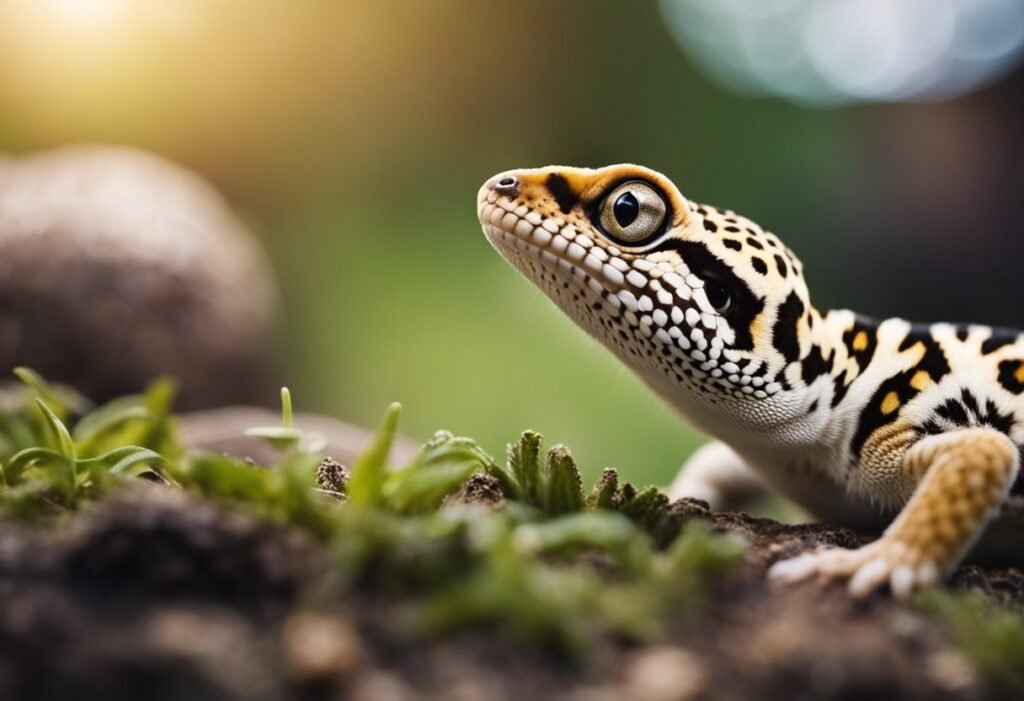
Are isopods a safe dietary choice for leopard geckos?
Yes, isopods (also known as rolly pollies or pillbugs) can be a safe dietary choice for leopard geckos. They are a good source of protein and calcium, which are essential for the health of your gecko.
Which insects should be avoided when feeding leopard geckos?
Leopard geckos should not be fed insects that are toxic or have hard exoskeletons, such as fireflies, ladybugs, and beetles. These insects can cause harm to your gecko’s digestive system and overall health.
Can ants be included in a leopard gecko’s diet?
While ants are not toxic to leopard geckos, they are not recommended as a regular part of their diet. Ants do not provide a significant amount of nutrition and can be difficult for geckos to digest due to their small size.
What are the potential risks of feeding wild-caught insects to leopard geckos?
Wild-caught insects can carry parasites or diseases that can be harmful to your gecko. It is recommended to feed your gecko captive-bred insects to reduce the risk of infection.
How should isopods be introduced into a leopard gecko’s habitat?
Isopods can be introduced into your gecko’s habitat by placing them in a dish or container. It is important to ensure that the container is escape-proof and that the isopods have access to food and water.
What are the nutritional considerations when selecting food for leopard geckos?
Leopard geckos require a diet that is high in protein and calcium. It is recommended to feed them a variety of insects, such as crickets, mealworms, and waxworms, as well as occasional fruits and vegetables as a source of vitamins and minerals. It is important to provide your gecko with a balanced diet to ensure their health and well-being.


